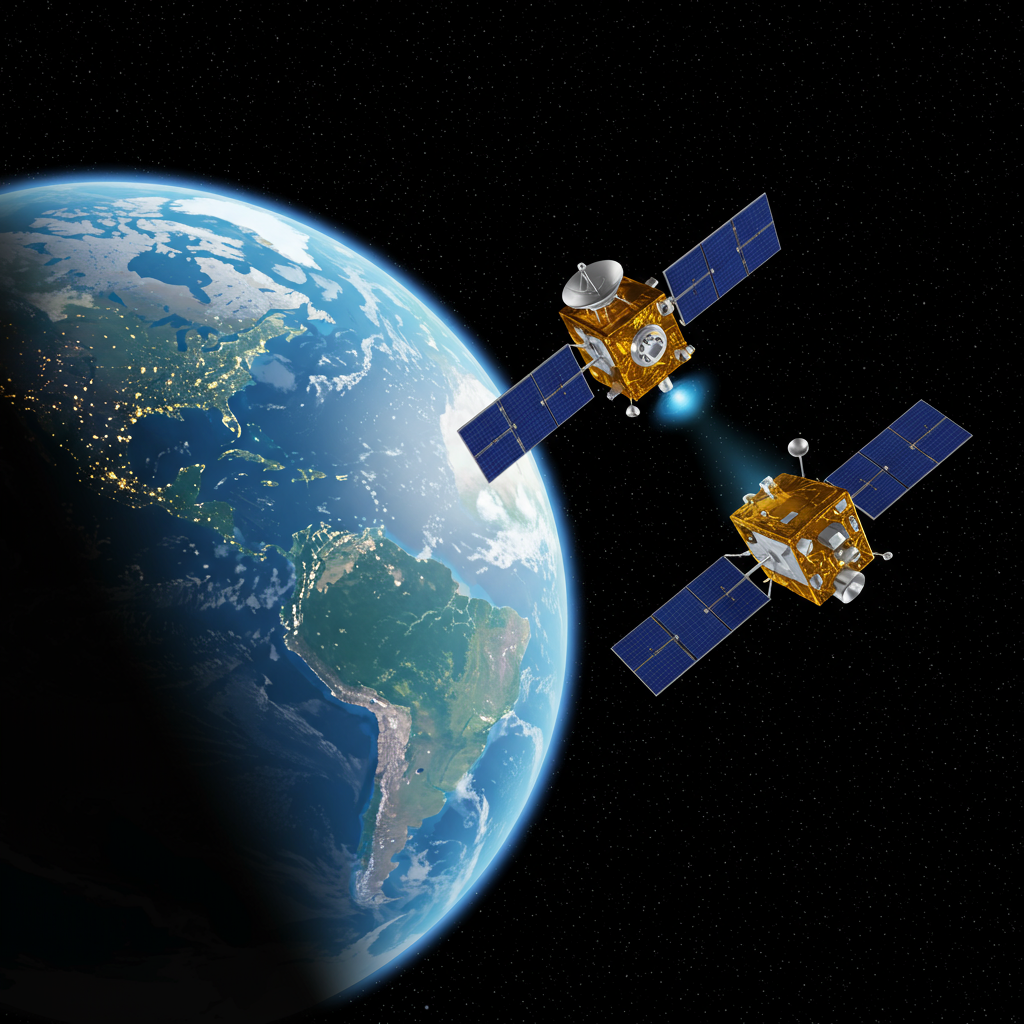China Tests Advanced Satellite Servicing High Above Earth
Two Chinese spacecraft recently performed a remarkable rendezvous in the high-altitude realm known as geosynchronous orbit (GEO), located approximately 22,236 miles (35,786 kilometers) above the equator. This close encounter between the Shijian-21 and Shijian-25 satellites appears to be a significant step in China’s pursuit of advanced on-orbit capabilities, specifically focusing on demonstrating satellite refueling and servicing technologies.
The maneuver, which unfolded in June 2025, drew attention from space situational awareness companies tracking activity in this critical orbit. Observations from the ground confirmed that Shijian-21 and Shijian-25 executed multiple close approaches on June 13 and 14. At times, the satellites were so near each other that they were virtually indistinguishable in tracking data. This high level of proximity strongly suggests that the mission included tests of close-quarters maneuvering and potentially even a trial docking and undocking sequence.
The Purpose: Extending Satellite Life and Ensuring Sustainability
The primary goal behind demonstrating capabilities like on-orbit refueling and servicing is to improve the long-term sustainability and resilience of operations in space. Satellites in valuable orbits like GEO often reach the end of their operational life not because their payloads fail, but because they run out of the propellant needed to maintain their position or make maneuvers. The ability to refuel or repair these satellites in orbit could drastically extend their lifespan, saving the cost and time of launching replacements.
Furthermore, on-orbit servicing is crucial for managing space debris. China’s Shijian-21 satellite has prior experience in this area, having successfully towed a defunct satellite from geosynchronous orbit into a higher “graveyard” orbit after its launch in 2021. The newer Shijian-25 satellite, launched in January 2025, was specifically designed to demonstrate satellite servicing and refueling technologies. Bringing these two capabilities together in a single mission highlights China’s integrated approach to space sustainability and asset management.
China’s Growing Prowess in Orbital Mechanics
The successful execution of precise close-proximity operations in GEO adds another feather to China’s cap in mastering complex orbital maneuvers. China’s space program has increasingly demonstrated sophisticated capabilities, from lunar exploration missions to intricate orbital rescues, showcasing a deep understanding of navigating the dynamics of space. Both Shijian-21 and Shijian-25 were developed by the Shanghai Academy of Spaceflight Technology (SAST), underscoring the nation’s indigenous technological advancements.
A Strategic Orbit: Geopolitical Context
Geosynchronous orbit is often referred to as the “digital high ground” due to its crucial role in global communications, navigation, weather monitoring, and military intelligence and surveillance. Many nations, including the United States, rely heavily on assets positioned in GEO.
The increasing capability of nations to operate, maneuver, and potentially interfere with satellites in this vital domain has added a strategic dimension to space activities. The presence of U.S. surveillance spacecraft reportedly positioned nearby the Chinese satellites during their rendezvous highlights the strategic interest in such demonstrations. The development of advanced on-orbit capabilities like servicing, debris mitigation, and close-proximity operations is viewed not only through a technical lens but also within the context of great power competition in space.
A Global Race for Orbital Servicing
The development of on-orbit satellite servicing is not unique to China; it’s a growing trend globally. Companies in the United States, such as Northrop Grumman, have already demonstrated satellite life extension services in GEO with their Mission Extension Vehicles. Similarly, Japan’s Astroscale is preparing for complex refueling tests targeting U.S. Space Force satellites in GEO in the near future.
Beyond servicing, other nations are also pushing the boundaries of precise orbital control. For example, the European Space Agency’s Proba-3 mission recently demonstrated ultra-precise formation flying, holding two satellites at a fixed distance of 150 meters with millimeter accuracy for hours. This capability is crucial for future missions like creating artificial solar eclipses for scientific study, but also underpins potential future applications like advanced docking or complex orbital assembly.
The recent rendezvous by China’s Shijian satellites is a clear indicator that on-orbit servicing is transitioning from concept to reality, marking a significant step forward for China’s space program and underscoring the increasing technological sophistication and strategic importance of operating in high Earth orbit.




